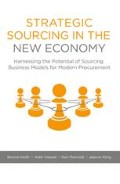Abstract
Think of children, and the various levels of maturity they go through as they develop. Physical maturity allows children to crawl, then walk, then run. Mental maturity develops as children begin to process problems. Children start by figuring out how to get dressed and tie their shoes. As they develop, they learn to handle more complex problems, such as algebra and learning how to drive so they can get themselves to school. Cognitive maturity is the ability to relate cause and effect, understand societal rules, and see the potential consequences of your actions. Emotional maturity helps children deal with siblings and difficult peer group dynamics with grace.
Access this chapter
Tax calculation will be finalised at checkout
Purchases are for personal use only
Preview
Unable to display preview. Download preview PDF.
Notes
Philip B. Crosby, Quality Is Free (New York: McGraw-Hill, 1979).
Sid Kemp, “The History and Purpose of the Capability Maturity Model (CMM),” Hub Pages, August 28, 2012; http://hubpages.com/hub/The-History-and-Purpose-of-the-Capability-Maturity-Model-CMM; accessed February 21, 2015.
Gerard Chick and Robert Handfield estimate up to 80 percent in The Procurement Value Proposition (London: Kogan Page, 2012).
Gerard Chick and Robert Handfield estimate up to 80 percent in The Procurement Value Proposition (London: Kogan Page, 2012). Cees J. Gelderman and Arjan J. van Weele estimate 60 to 80 percent in “Purchasing and Supply Chain Management,” European Journal of Purchasing & Supply Management 2, no. 4 (1996): 153–160; http://arjanvanweele.com/42/records/14/Revolution%20in%20purchasing%201996%20JPSM.pdf.
C. J. Gelderman and Arjan J. van Weele, “Handling Measurement Issues and Strategic Directions in Kraljic’s Purchasing Portfolio Model,” Journal of Purchasing and Supply 9 (2003): 207–216; http://www.sciencedirect.com/science/article/pii/S147840920300044X; accessed June 6, 2015.
John Henke estimates 70 percent for Chrysler: John W. Henke Jr, Thomas T Stallkamp, and Sengun Yeniyurt, “Lost Supplier Trust: How Chrysler Missed Out on 24 Billion in Profits over the Past Twelve Years,” Supply Chain Management Review (May/June 2014):1; http://www.scmr.com/article/lost_supplier_trust_lost_profits; accessed January 11, 2015.
Quoted in Noel M. Tichy and Stratford Herman, Control Your Destiny or SomeoneElse Will (New York: Doubleday, 1993, p. 290).
Joe Keohane, “How Facts Backfire: Researchers Discover a Surprising Threat to Democracy: Our Brains,” Boston Globe, July 11, 2010; http://www.boston.com/bostonglobe/ideas/articles/2010/07/ll/how_facts_backfire/?page=full; accessed March 21, 2015.
Ian R. McNeil, Contracts: Instruments for Social Cooperation (London: F.B. Rothman, 1968); http://www.tacadvisory.com/powertips_sample.asp?name=st999730.htm; accessed June 9, 2015.
Copyright information
© 2016 Bonnie Keith, Kate Vitasek, Karl Manrodt, and Jeanne Kling
About this chapter
Cite this chapter
Keith, B., Vitasek, K., Manrodt, K., Kling, J. (2016). Maturity Meets Modality. In: Strategic Sourcing in the New Economy. Palgrave Macmillan, New York. https://doi.org/10.1007/978-1-137-55220-4_11
Download citation
DOI: https://doi.org/10.1007/978-1-137-55220-4_11
Publisher Name: Palgrave Macmillan, New York
Print ISBN: 978-1-137-55218-1
Online ISBN: 978-1-137-55220-4
eBook Packages: Business and ManagementBusiness and Management (R0)

